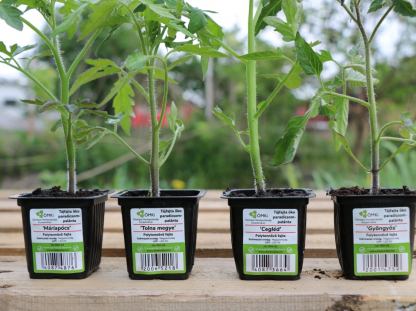Our research made understandable
Nutrient supply in intensive horticulture
In conventional plant production nutrient supply is adjusted to the expected yield level and development of the given species. Consequently, different nutrients and bioactive materials are added according to the needs of the plants after planting (for optimal rooting) and during the phases of vegetative development, flowering, fertilization and ripening.
This clocklike dosing is needed, because production either takes place without soil (through hydroponics), or the humus content of the soil is usually very low (0.5-1%). The major basic principle of organic farming is conservation and enhancement of soil fertility. What does this mean, and how to do it? One of the research topics of ÖMKi (Hungarian Research Institute of Organic Agriculture) is nutrient supply and humus management in horticulture.
We have only limited information on how, when and how many nutrients get released becoming available for the plants in those intensive gardens where – by following the basic principles of organic farming – a significant amount of green compost (more than 30 kg/m2 ) is applied every year. Although green composts (including only green waste that is plant residues such as woodchips, twigs, leaves, lawn clippings, pomace, etc.) have a relatively low nutrient content (with about 0.5-1% nitrogen, phosphorous and potassium ratio), after 3-4 years of application they significantly increase the humus content of the soil. Professional farmers use compost, granulated manure or different microbiological preparations supporting soil health and soil microflora-plant connections. At our experimental site we measured 4.5-5% humus content in the soil, providing significant nutrient supply for the plants. During the field experiment we reduced the amount of supplementary added granulated chicken manure (and even omitted it the case of one treatment), and we used preparations including Trichoderma asperellum fungus (strain T34) and Bacillus amyloliquefaciens bacterium.
During the year we continuously measured the development and the flowering of the tomato landrace, called Herencsényi, besides the quantity and quality related parameters of the yield.


.jpg)





